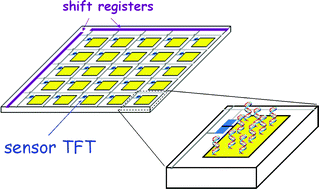Chemical and biological sensors using polycrystalline silicon TFTs
Abstract
Over the past three decades effort has been devoted to exploit the field-effect mechanism in chemical and biological sensors, due to the potential of these devices to provide large arrays of sensors that are label-free, low-cost, disposable and can be easily integrated in portable instrumentation. Most of this work concerned the development of ion-sensitive field-effect transistors. More recently, field-effect devices have been investigated for the detection of DNA hybridization and


 Please wait while we load your content...
Please wait while we load your content...